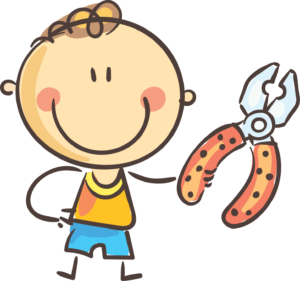Innovative Early Childhood STEM as a priority in Louisiana Children’s Museums
 This discussion took place as an “Ecosystem to Ecosystem – E2E” session during the New Orleans, LA – Spring 2019 STEM Learning Ecosystems Community of Practice Convening in April 2019.
This discussion took place as an “Ecosystem to Ecosystem – E2E” session during the New Orleans, LA – Spring 2019 STEM Learning Ecosystems Community of Practice Convening in April 2019.
Speakers: Allison Brody, STEM-NM, Explora; Dianne Clark, North Louisiana STEM Alliance & Sci-Port Discovery Center; Cate Heroman, GEN Ready, Knock Knock Children’s Museum; Heather Kleiner, North Louisiana STEM Alliance & Sci-Port Discovery Center; Demetrius Norman, Founding President, NWLA Makerspace
A panel of leaders from children’s museums and science centers in Louisiana and New Mexico discuss how they use play to engage families and build awareness around STEM from early ages. Each organization – Explora from STEM-NM, the Sci-Port Discovery Center, and Knock Knock Children’s Museum – presents an overview of work, a hands on activity that families in their home communities complete together and a gallery walk activity for session participants with six questions and prompts.
STEM-New Mexico, Explora
In New Mexico, STEM-NM deploys an ecosystem approach to early childhood learning. Ecosystem leaders share that STEM can be intimidating to young families and many families do not see the connection between early childhood learning and STEM. STEM-NM works to make early childhood STEM more accessible and approachable through its messaging, materials and resources, and engagement.
 “We’re not teaching STEM in the same way that STEM is being taught in the school. We are adding to what a young child and a young parent knows and understands about the subject. And it is just these added cognitive hooks. And it’s how you facilitate that experience that will create that cognitive hook that will last throughout a lifetime,” says Allison Brody, STEM-NM ecosystem lead.
“We’re not teaching STEM in the same way that STEM is being taught in the school. We are adding to what a young child and a young parent knows and understands about the subject. And it is just these added cognitive hooks. And it’s how you facilitate that experience that will create that cognitive hook that will last throughout a lifetime,” says Allison Brody, STEM-NM ecosystem lead.
Messaging that makes STEM more approachable helps build families’ capacity to engage their children in STEM. Ecosystem backbone, Explora, uses intentional play to build on the skills and behaviors that increase the cognitive level of children.
Explora also makes materials and tools families can use at home, helping them better understand the role they can play in learning with their child.
Louisiana Children’s Museum
The Louisiana Children’s Museum (LCM) in New Orleans exposes early childhood educators to STEM best practices. LCM uses field trip opportunities to have expert staff early childhood STEM education practices to early childhood educators, who are often under-trained or under-exposed to STEM. LCM staff model things like question asking, working through the scientific method, facilitating discussions, and how to guide stem experiences rather than doing them for a child, as a form of low pressure professional development.
“It’s important to show children and adults that it is okay not to know the answer,” says Emily Barnitz.
Using tools and materials that are easily accessible to educators, LCM makes activities learned on site replicable for classrooms, removing barriers and requiring little additional planning time.
LCM also makes STEM accessible to families by showcasing exhibits and activities that demonstrate STEM is everywhere and can be combined with literacy, integrated with other subjects to enhance learning.
Knock Knock Children’s Museum
Knock Knock Children’s Museum is a new children’s museum with 18 different learning centers, each with their own integrated STEM component. In addition to a variety of programs including camps for students and professional development for teachers, the Knock Knock Makers Shop offers field trips, as well as self guided activities to early learners.
The Knock Knock Maker Shop offers tinkering, making and engineering to promote STEM learning. Tinkering allows students to play with different items, explore its physical properties and determine how it works. Making has an end product in mind, with early learning creating a specific product. Engineering uses items to make things to solve problems.
“One fact that has always jumped out for me is that two thirds of the kids in elementary schools today are going to be doing the jobs that haven’t even been invented yet. Can you imagine? They haven’t even been invented yet. So how do you prepare kids for that? And to me it’s about creative thinking, problem solving, innovation, imagination. All those things that are wrapped up in STEM,” says Cate Heroman, a Knock Knock leader.
Knock Knock also uses a criteria to decide what experiences to offer, looking at: the ability for students to collaborate; its STEM/STEAM content; the ability for children to troubleshoot and iterate; and the offer of multiple entry points to engage people at different skill levels and ages.
“Whether you’re in a school situation or you see them in an after school program. You have a wide range of abilities of children coming into your space. And so for a museum we don’t know who’s coming. We don’t know who that is so we find having activities that have multiple entry points essential,” says Heroman.
North Louisiana STEM Alliance – Sci-Port Discovery Center
The North Louisiana STEM Alliance presents the Sci-Port Discovery Center, the main community resource for STEM activities in the region, and NWLA Makerspace, a program being adapted for early learners, as key partners within the ecosystem.
NWLA Makerspace currently serves as a traditional makerspace, providing tools and classes, in addition to hosting Maker Fairs for the community in North West Louisiana. Teaching STEM as an interdisciplinary skill, the makerspace currently serves 70 kids and plans to open a second location to reach more students.
